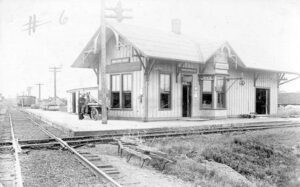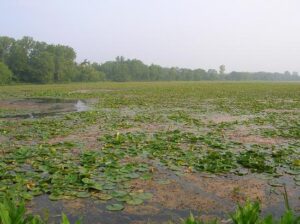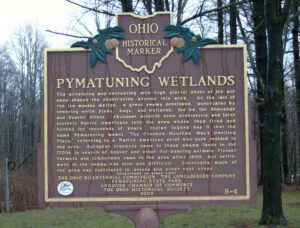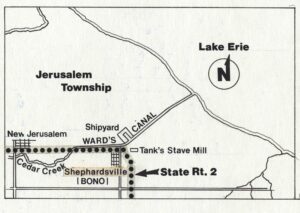, OH
For centuries this area was used by Indian tribes as a hunting ground. Vast swamp forests of elm, ash, beech, pin oak, and maple lay on all sides. To the east, a large cranberry bog was covered by water most of the year. Indian hunting camps on the headwaters of Sycamore Creek were the scene of plentiful harvests both of game and cranberries. These wetlands produced abundant game after most sections of the country were settled and farmed. Today, extensive drainage has changed the area into productive farmland.
, OH
Nearly 90% of Ohio’s wetlands have been drained or filled. Kettle holes, sphagnum peat bogs, prairies, and oak openings are still found in a few glaciated areas in the northern half of the state. Coastal areas along Lake Erie and bottomlands along Ohio’s rivers and streams preserve the remaining wetlands. Once a commercial fur farm, Spring Valley Wildlife Area exhibits the abundance of waterfowl and other wildlife common in wetlands, brushlands, and upland forest areas. More than 230 species of birds have been recorded here.
, OH
The advancing and retreating mile-high glacial sheet of ice and snow shaped the countryside around this area. As the last of the ice masses melted, a great swamp developed, punctuated by towering white pines, bogs, and wetlands, fed by the Shenango and Beaver rivers. Abundant wildlife drew prehistoric and later historic Native Americans into the area where they lived and hunted for thousands of years. Indian legend has it that the name Pymatuning means “The Crooked-Mouthed Man’s Dwelling Place,” referring to a Native American chief who once resided in the area. European trappers came to these swamp lands in the 1700s in search of beaver and other fur-bearing animals. Pioneer farmers and lumbermen came to the area after 1800, but settlement in the swamp was slow and difficult. Eventually much of the area was cultivated in onions and other root crops. (continued on other side)
, OH
To utilize the area’s rich timber stands, Detroit industrialist Eber Brock Ward (1811-1875) built a canal around 1870 in what was then Oregon Township, Lucas County. Known as Ward’s Canal, it stretched approximately 2-3/4 miles through wetlands to Lake Erie. Through the canal passed timber sawn at Ward’s mills and ships from his boatyards. Two settlements formed to house workers: Shepherdsville, renamed Bono in 1898, and New Jerusalem. (Continued on other side)






